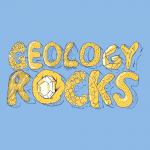|
This section contains 1,257 words (approx. 5 pages at 300 words per page) |

|
Geology is, at heart, a field science. Even though much work is done in the laboratory and at the computer, geological samples and information must initially be obtained from the context in which they occur in nature. This natural setting would typically be a field locale chosen by the investigating geologist, or by his employers.
The main field instruments used by geologists include the Brunton compass (and/or Silva compass), tape measures, and plane table and alidade. The Brunton compass is a compact device that permits compass bearings to be made upon linear features (including strike lines) and lines connecting any two points. The Brunton may also function as a protractor (when placed upon a map) and as a device for measuring structural dip and vertical angles (using its internal clinometer). The Silva compass is somewhat similar, except that it does not...
|
This section contains 1,257 words (approx. 5 pages at 300 words per page) |

|


